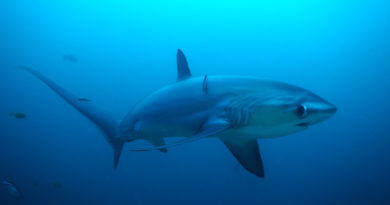New Malapascua Footage
After about a week of diving with People and the Sea in Malapascua I have been lucky enough to capture some interesting marine life behavior on video. The main goal of this visit to Malapascua is to train the People and the Sea scientific diving staff in doing fish surveys, but there is always enough time during dives to point my GoPro at some fish! I decided to travel light this time and not bring my full underwater camera setup, but the GoPro does an excellent job… the only regret I have is that I did not bring my video light, which would have improved the colors of videos filming mid-sized scenes. However, for the wide-angle footage a video light would not have helped much – no light is strong enough to illuminate a whole reef, and video lights are not allowed at the site of the thresher shark sightings near Malapascua. Sometimes, you have to do with the relatively little ambient light which you have got. Even though several days were overcast and the visibility was mediocre, I am quite happy with my new videos:
A Malapascua classic of course are the thresher sharks, Alopias pelagicus. These graceful sharks are rarely seen by divers, since they live in the open ocean or at depth; at Monad shoal near Malapascua, however, they come to have their parasites removed by cleaner wrasses, which happens off the shoal, in less than 30 meters of depth.
Two-barred soapfish, Diploprion bifasciatum, are following a school of lined catfish, Plotosus lineatus, while foraging on a soft-coral dominated reef near Malapascua, Philippines. The soap fish get seconds from the cat fish’s digging, while there is no obvious advantage for the catfish in this interaction.
This is a swimming crinoid … usually these invertebrates related to seastars sit on exposed rocks or corals and filter feed. Occasionally they decide to change location and swim up into the water column with this odd swimming style.
And .. everybody loves sea snakes! They are too venomous to be afraid of divers, so it’s possible to observe them for extended periods of time.


